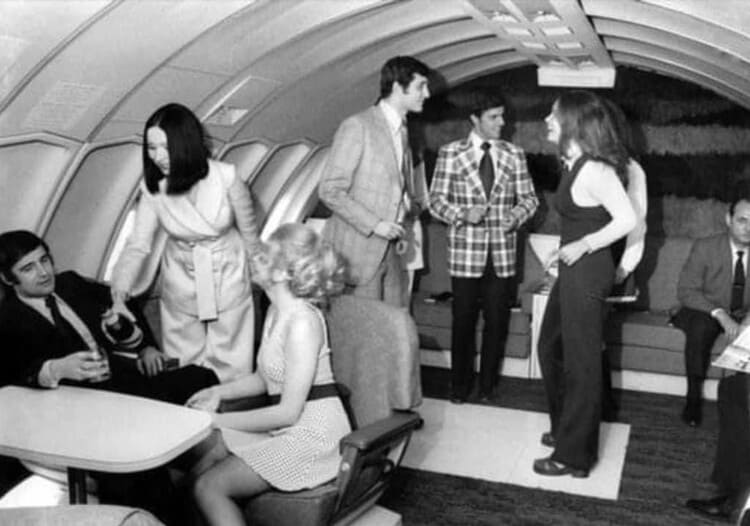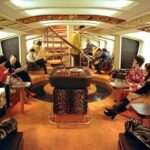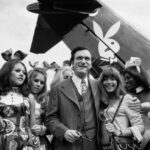Remember when flying was more than just a matter of cramming into a narrow seat with strangers and competing for the armrest?
Let’s rewind to the 1970s—a time when aviation was bursting with possibilities and a little disco fever. And in this golden era of air travel, Air Canada decided to take things to groovy new heights.
That’s right.
In 1971, Air Canada unveiled what might still be one of the boldest ideas in commercial aviation history: a dance floor on the upper deck of their brand-new Boeing 747s.
Yes, seriously. A dance floor. In the sky.
The Dawn of the Boeing 747—and a New Era of Imagination
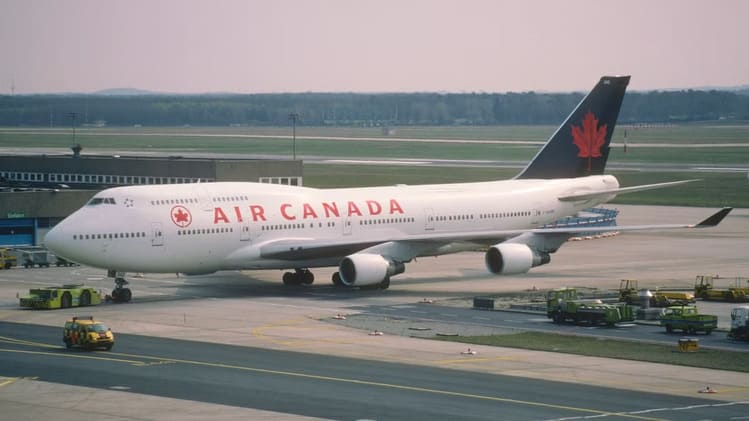
The 1970s were a pivotal decade in aviation. With the launch of the Boeing 747 in 1970, airlines suddenly had space—a lot of it.
Dubbed the “Queen of the Skies,” this jumbo jet could carry more passengers and gave airlines unprecedented freedom to experiment with in-flight experiences.
And experiment they did.
While some airlines opted for quiet lounges, fancy dining rooms, or cocktail bars, Air Canada asked a radically simple question: What do passengers really want?
The answer?
Apparently, to dance.
Air Canada’s Sky High Dance Floor
In 1971, Air Canada installed a full-fledged dance lounge on the upper deck of its 747s that flew transatlantic routes from Toronto to Europe.
But this wasn’t just a roped-off space with background music. It was a disco in the clouds, complete with a mirrored wall and enough room for travelers to let loose and groove at cruising altitude.
According to Heather Tregaskes, a former Air Canada flight attendant who worked in the lounge, the experience was nothing short of magical.
“It was all so gracious,” she told the Toronto Star in 2004. “We even had a mirrored wall and a dance floor, and sometimes stewardesses would even dance with customers.”
It’s hard to imagine a modern flight attendant doing the hustle with passengers between meal service and turbulence checks.
But back then, it was all part of the fun.
A Mile-High Social Club
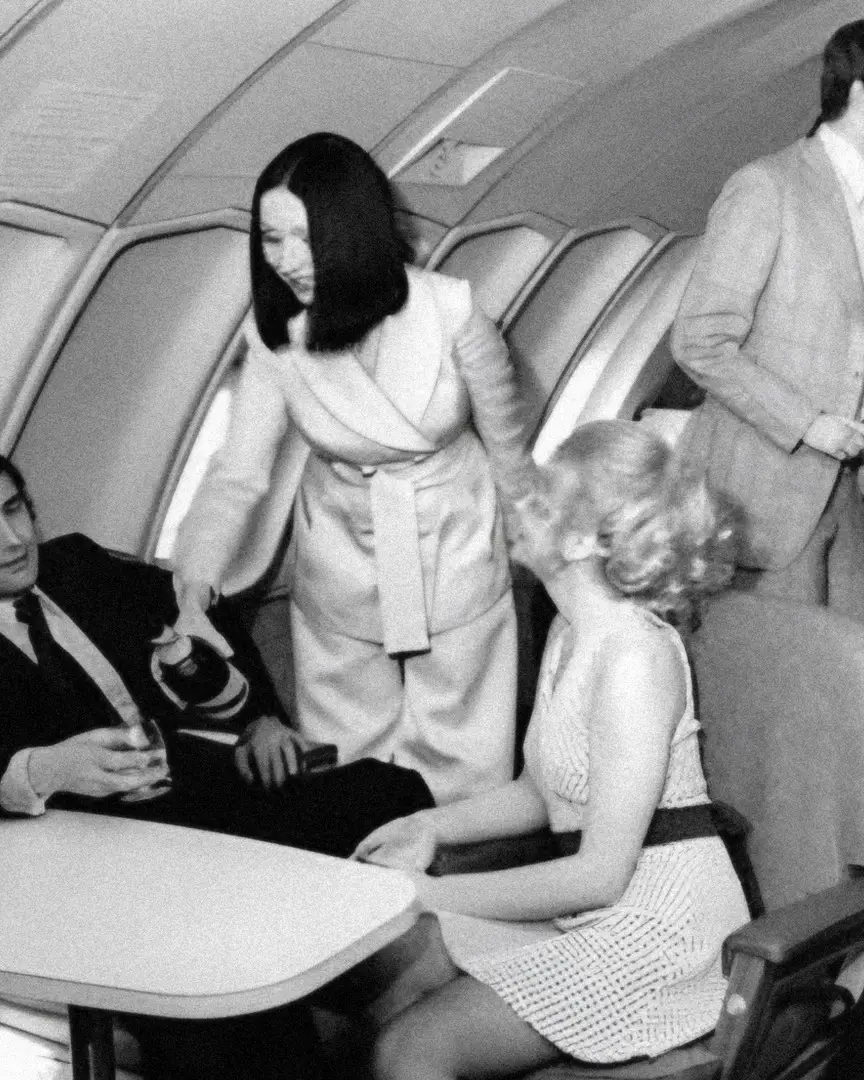
For roughly a year after the launch of the 747, Air Canada passengers on select international flights were treated to more than complimentary drinks and warm towels—they were welcomed into an airborne social scene.
Instead of watching movies on a screen the size of a paperback book or scrolling endlessly through inflight Wi-Fi, passengers danced, mingled, and made new friends mid-flight.
It was flying reimagined as a night out—with no cover charge, no bouncers, and a dress code dictated only by 1970s flair.
They Weren’t Alone: The Airline Glam Race
Air Canada wasn’t the only airline trying to win passengers’ hearts (and wallets) through luxury and novelty.
The 1970s was the era of airline one-upmanship.
American Airlines, for example, installed a piano bar in the rear cabin of their 747s, complete with live performances.
Continental Airlines got into the game in the 1980s with their “Pub Flights” on DC-10s, featuring a full-service bar where flight attendants doubled as bartenders.
Qantas, not to be left out, launched the Captain Cook Lounge on its 747s—a cozy space behind the cockpit where up to 15 passengers could sip cocktails and chat during long-haul flights.
It was a time when flying felt glamorous, social, and—dare we say—fun.
So What Happened to the Dance Floor?
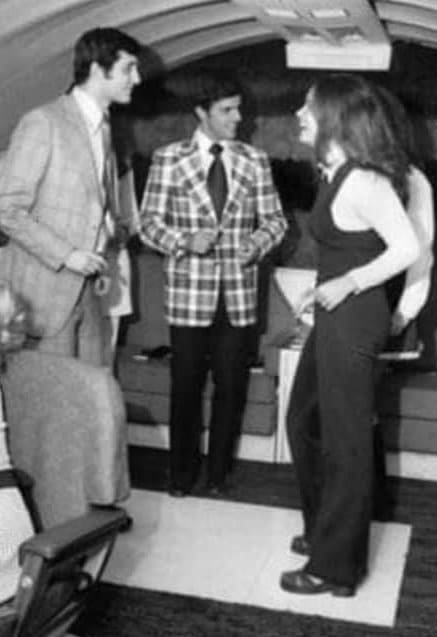
In short: economics.
As the airline industry matured, fuel prices climbed, and ticket prices dropped, airlines began to re-evaluate their priorities.
Extra space that could host a mirrored dance floor suddenly looked a lot less appealing than a few dozen paying customers.
Slowly but surely, the party was over.
Lounges turned into rows of seats. Bars were dismantled to make way for overhead bins. And the dance floors were pulled up, their grooves replaced by the dull hum of economy-class engines.
A Symbol of Risk—and Reward
While Air Canada’s disco-era experiment was short-lived, it left a lasting impression. It wasn’t just about the music or the novelty—it was about daring to ask a different question: How can we make flying joyful again?
In a world increasingly focused on cutting costs and maximizing efficiency, the dance floor serves as a reminder of what happens when companies take bold, customer-focused risks.
Air Canada didn’t wait for passengers to ask for entertainment—they surprised them with something they never knew they wanted.
And for a brief moment in aviation history, it worked.
What It Says About Innovation
The story of Air Canada’s mile-high dance lounge is more than just a quirky anecdote—it’s a lesson in innovation.
It shows what can happen when companies listen not just to what customers are saying, but to what they aren’t saying.
Nobody was filling out customer feedback forms in the 1970s asking for a dance floor. But Air Canada saw an opportunity to create an experience, not just a service.
And that mindset—creating something memorable, something delightful—is still relevant today.
Imagine That Today…
Now, when you’re on a long-haul flight and everyone is zoned out behind their individual screens, it might feel impossible to believe that someone once stood in the aisle and asked, “Care to dance?”
But if you’re ever stuck in seat 32B, knees against the tray table, remember: not so long ago, passengers danced across the Atlantic.
There were disco balls, mirrored walls, and real, human connection at 35,000 feet.
Maybe that’s what air travel needs again—not just more space, but more imagination.
The Legacy Lives On
While the dance floor itself may be gone, the legacy of those risk-taking, customer-focused years still lingers.
Today’s luxury airline suites, chef-designed menus, and in-flight bars on airlines like Emirates or Virgin Atlantic owe a small debt to the playful spirit of the 1970s.
That mirrored wall on an Air Canada 747? It was more than decor—it was a symbol of boldness, of dreaming big, and of bringing a little joy to the journey.
Because flying, at its best, isn’t just about getting somewhere. It’s about how you get there.
And for one glorious year in the 1970s, it included disco.
